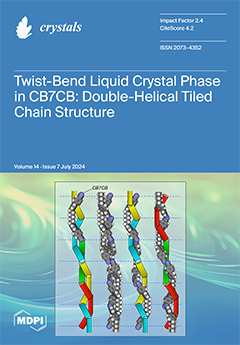In recent decades, numerous studies have indicated the substantial role semiconductors could play in photocatalytic processes for environmental applications. Materials that contain a semiconductor as a photocatalyst have a semi-permanent capacity for removing harmful gases from the ambient air. In this paper, the focus is on TiO
2. Heterogeneous photocatalysis using TiO
2 leads to the degradation of NO/NO
2, benzene, toluene, and other priority air pollutants once in contact with the semiconductor surface. Preliminary evidence indicates that TiO
2-containing construction materials and paints efficiently destroy the ozone precursors NO and NO
2 by up to 80% and 30%, respectively. Therefore, the development of innovative coatings containing TiO
2 as a photocatalyst was in the foreground of research activities. The aim of this was for coatings to be used as building and construction materials, mainly outdoors, e.g., on building façades on high-traffic roads for the degradation of priority air pollutants (NOx and volatile organic compounds) in the polluted urban atmosphere. Though there are advantages connected with the application of TiO
2, due to its band gap of 3.2 eV, these are limited. TiO
2 is effective only in the UV region (ca. 5%) of the solar spectrum with wavelengths λ < 380 nm. Hence, efforts are made here, as in many research studies, to dope TiO
2 with transition metals to increase its activity using visible light, which will extend its application to indoor environments. In our studies, experiments were conducted with 0.1% (
w/
w) and 1% (
w/
w) Mn-TiO
2 admixtures, and the ability of the modified photocatalysts to degrade NO by both solar and indoor illumination was evaluated. The surface chemistry at the air/catalyst interface, governed by the photoelectric characteristics of TiO
2 and the formation of reactive oxygen species with co-occurring redox reactions, is reviewed in this paper. The factors affecting the application of TiO
2 for the degradation of priority air pollutants as single compounds or mixtures are discussed. We investigated, particularly, the degradation of mixtures of priority compounds at typical concentrations in ambient air and confined spaces. This is a realistic approach, because pollutants are present as mixtures, rather than as individual compounds in ambient and indoor air. Moreover, organic polymers as paint constituents were found to be the primary source for carbonyl formation, e.g., formaldehyde, acetaldehyde, etc., during the heterogeneous photocatalytic processes conducted on TiO
2-enriched coatings.
Full article





